Scientists research many aspects of striped bass throughout the east coast and other areas of the United States. Universities and government agencies like the Fish and Wildlife Service conduct annual striped bass surveys to monitor how many striped bass are out there and to track their migration patterns. Some researchers examine the biology of striped bass and how they are affected by pollution. These and other questions help us understand how to best conserve and manage striped bass populations.
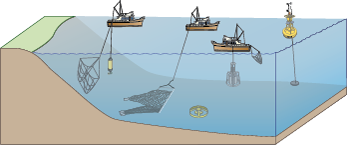 How do scientists study striped bass in the Chesapeake Bay?
How do scientists study striped bass in the Chesapeake Bay?
Researchers from the University of Maryland continue to focus on the striped bass nursery area in the Chesapeake Bay—the ETM. Their goal is to make connections between climate change, physical conditions of the Chesapeake Bay, food webs, and striped bass abundance. In order to make these connections, they use a variety of different instruments and techniques to explore both biotic and abiotic factors. Just as a criminal leaves behind evidence at the scene of a crime, living organisms leave clues or evidence of their location in their habitat. Scientists use biotic and abiotic clues to develop pictures or graphs of the location of various organisms that make up the food webs within the Chesapeake Bay.
Exploring the biotic factors affecting striped bass
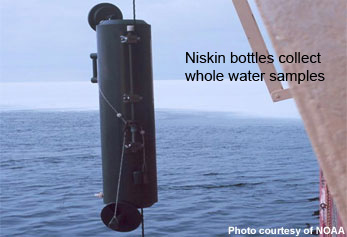 To understand the food webs, scientists try to learn about very small organisms, including microbes and phytoplankton. Water samples collected with Niskin bottles are filtered to separate the large organisms from the very tiny microbes. These filters work like coffee filters; the large organisms stay on the filter and smaller organisms pass through like coffee.
To understand the food webs, scientists try to learn about very small organisms, including microbes and phytoplankton. Water samples collected with Niskin bottles are filtered to separate the large organisms from the very tiny microbes. These filters work like coffee filters; the large organisms stay on the filter and smaller organisms pass through like coffee. Microbes can be collected on very small filters and studied to determine what types are present. Additionally, tiny floating plants called phytoplankton can be studied using their pigments (colored molecules used for harvesting light), which are unique to each group. Using these clues that organisms leave behind, scientists can make maps of even the smallest organisms in an estuary.
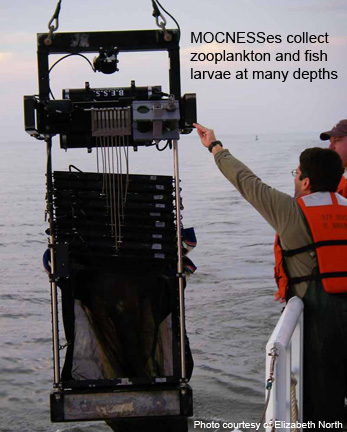 Zooplankton are animals that feed on phytoplankton and microbes. Scientists collect samples of zooplankton using nets, such as a MOCNESS (Multiple Opening/Closing Net and Environmental Sampling System) or Tucker trawl that sample the water at various locations and depths. These locations are recorded, and the samples are taken back to the lab for identification. Scientists must use microscopes to view the zooplankton due to their small size. From their examination, scientists are able to develop maps that show location of various zooplankton species within the Chesapeake Bay.
Zooplankton are animals that feed on phytoplankton and microbes. Scientists collect samples of zooplankton using nets, such as a MOCNESS (Multiple Opening/Closing Net and Environmental Sampling System) or Tucker trawl that sample the water at various locations and depths. These locations are recorded, and the samples are taken back to the lab for identification. Scientists must use microscopes to view the zooplankton due to their small size. From their examination, scientists are able to develop maps that show location of various zooplankton species within the Chesapeake Bay.Examination of the guts of zooplankton provides information about what the tiny animals eat. It is believed that in the nursery area or ETM of the
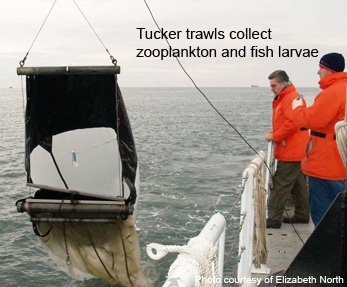 Fish larvae including those of striped bass are also part of the food web, and eat zooplankton. Scientists also use nets, such as mid-water trawls to collect samples of fish larvae which they have to take back to the lab and use microscopes to identify. This is hard work because many fish larvae look alike. Once scientists identify the species, they can make maps of their location.
Fish larvae including those of striped bass are also part of the food web, and eat zooplankton. Scientists also use nets, such as mid-water trawls to collect samples of fish larvae which they have to take back to the lab and use microscopes to identify. This is hard work because many fish larvae look alike. Once scientists identify the species, they can make maps of their location.Scientists study ear bones (otoliths) of striped bass, counting growth rings to determine the age of the fish. This is similar to counting growth rings of tree trunk cross section to estimate the age of the trees. Investigation includes analysis of the chemical make-up of the fish's muscles, bones, and tissues to discover what it has eaten. Fish health is directly influenced by the quality of food it eats.
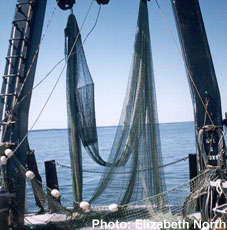
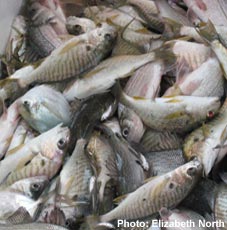
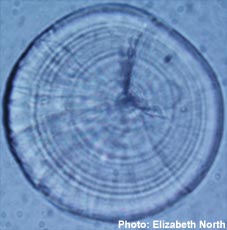
Exploring the abiotic factors affecting striped bass
In order to fully understand the striped bass habitat and food web, scientists also need to explore the abiotic factors that affect striped bass. Therefore, scientists use instruments to gather data about temperature, currents, and suspended sediments.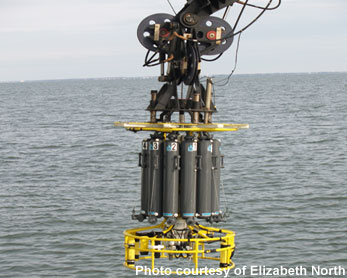
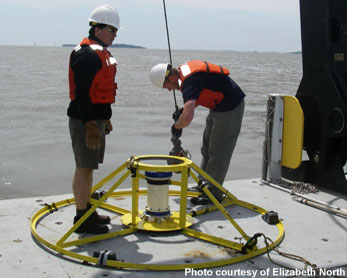
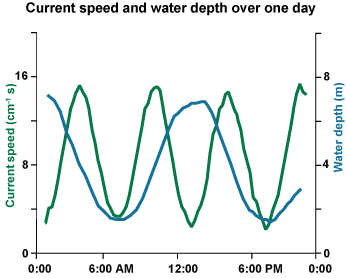
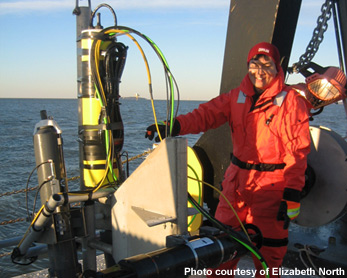
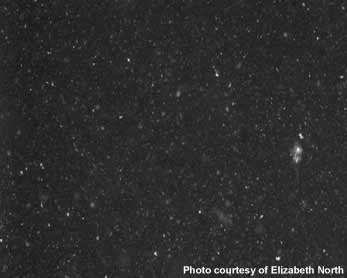
Activity: Research Tool Prototype
Activity: Striped Bass Project Menu
Activity: Where Could the Stripers Be?
Activity: Try-It's
Activity: Tic-tac-toe



